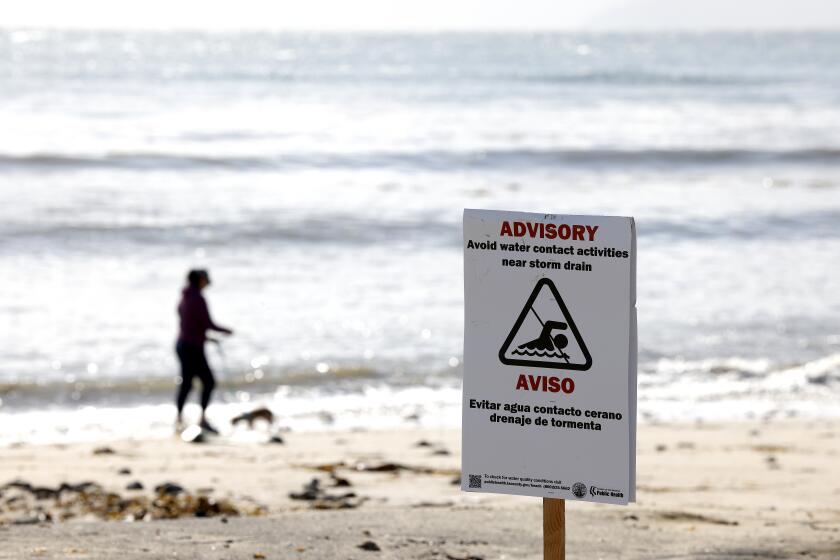Convicted Slayer’s Freedom Hinges on Timing of Miranda
About 11 p.m. on Sept. 29, 1982, a Los Angeles County sheriff’s homicide investigator and three Baldwin Park police officers arrived at a mobile home park in Pomona looking for a tall, red-bearded man who drove an ice cream truck. His name was Robert E. Stansbury.
The night before, a 10-year-old girl had disappeared from her Baldwin Park neighborhood, and her body had been found after midnight near Pasadena. She was last seen talking with an ice cream truck driver.
The officers asked Stansbury to come to the Pomona police station for questioning. He agreed and was taken to a locked interview room in the jailhouse.
For 30 minutes, Stansbury answered questions. He mentioned he had borrowed a friend’s old turquoise Ford the previous night. At that point, the interrogation stopped. The police had been told that the girl’s body had been thrown from an old turquoise auto. Stansbury was arrested--and, finally, was read his Miranda rights.
Stansbury was convicted of murder in part based on his comments about the turquoise car. But his attorneys appealed, arguing that police violated the Miranda rules by not warning him of his rights before the questioning--and before he implicated himself.
Now, nearly three decades after the landmark Miranda ruling, the Supreme Court will consider the case of Stansbury vs. California, 93-5770, to clarify when police must warn a suspect of his right to remain silent.
At issue is whether police must warn all suspects before they question them, or only after they have enough information to charge them with a crime.
The California Supreme Court rejected Stansbury’s Miranda claim on the grounds he was not in custody during the initial interrogation. The police had “solicited his voluntary cooperation . . . as a potential witness,” the state justices said.
BACKGROUND: Before the mid-1960s, confessions were judged to be legal if they were voluntary. But it was often hard for judges to know whether a confession was voluntary when defendants and police disagreed sharply about the circumstances of the questioning.
To remedy that problem, the high court issued a dramatic rule for “custodial interrogation” in the 1966 case of Miranda vs. Arizona.
“Prior to any questioning, the person must be warned that he has a right to remain silent, that any statement he does make may be used as evidence against him, and that he has a right to the presence of an attorney,” wrote Chief Justice Earl Warren.
“By custodial interrogation, we mean questioning initiated by law enforcement officers after a person has been taken into custody or otherwise deprived of his freedom of action in any significant way,” the court said.
In follow-up rulings, the justices made clear that Miranda did not apply to all police questioning. If a person comes to a police station and offers to talk, the officers need not warn him. The person must be “in custody,” when “a reasonable man” would think he is not free to leave, the court has said.
ARGUMENTS: Defense lawyers say Miranda can be rendered meaningless if police are permitted to question first and warn later.
“Miranda has been so watered down, and the police know it,” said Anthony Robusto, a Glendora attorney who represented Stansbury. In his appeal, Stansbury argues that his answers should not be used against him because he was questioned in a “police-dominated atmosphere.” A reasonable man in Stansbury’s place would think he was in custody, they say.
But police and prosecutors say the law should not handcuff them from quickly questioning possible witnesses to a crime, as long as they are not compelled to answer.
Los Angeles prosecutor Richard D. Burns said police originally thought another ice cream driver, not Stansbury, was the prime suspect. Officers asked to speak with Stansbury because they thought he might have seen the missing girl with the other driver.
“Police talk to people all day long--crime victims, witnesses and others--seeking information. Should they have to warn everyone?” Burns asked.
Should the high court conclude his Miranda rights were violated, Stansbury could be entitled to a new trial, and prosecutors would have to rely on old, circumstantial evidence to retry him.
Arguments in the case will be heard Wednesday, and a decision rendered by July.
More to Read
Start your day right
Sign up for Essential California for news, features and recommendations from the L.A. Times and beyond in your inbox six days a week.
You may occasionally receive promotional content from the Los Angeles Times.







